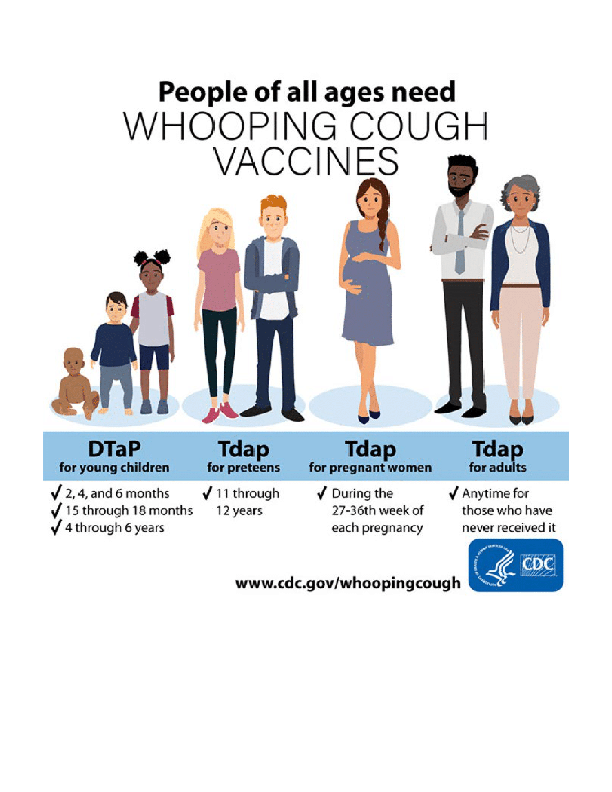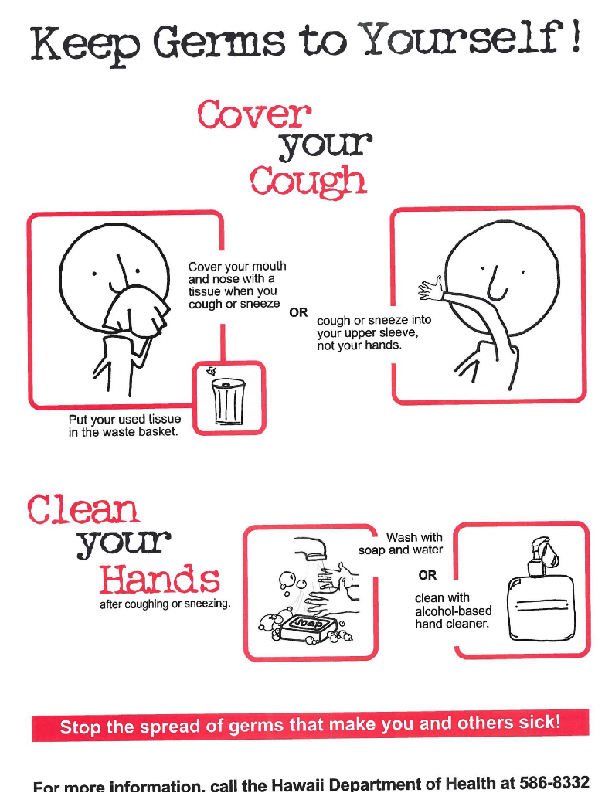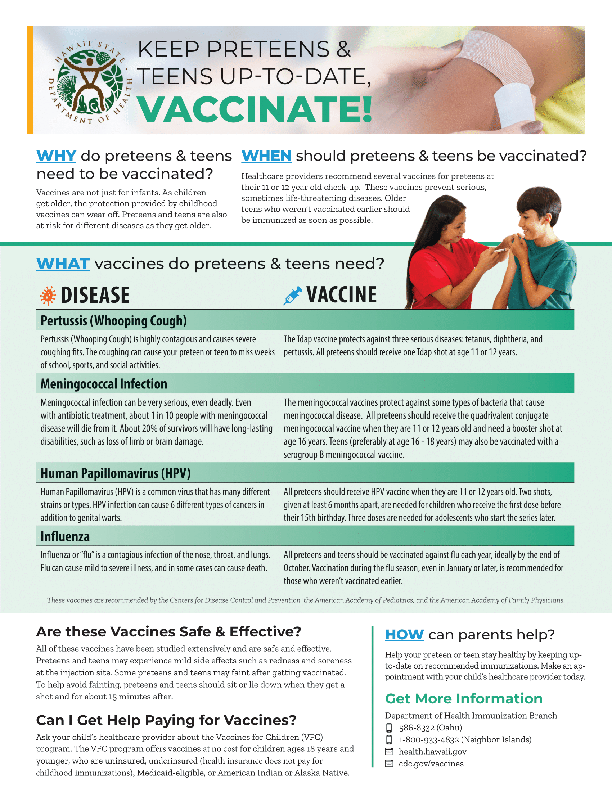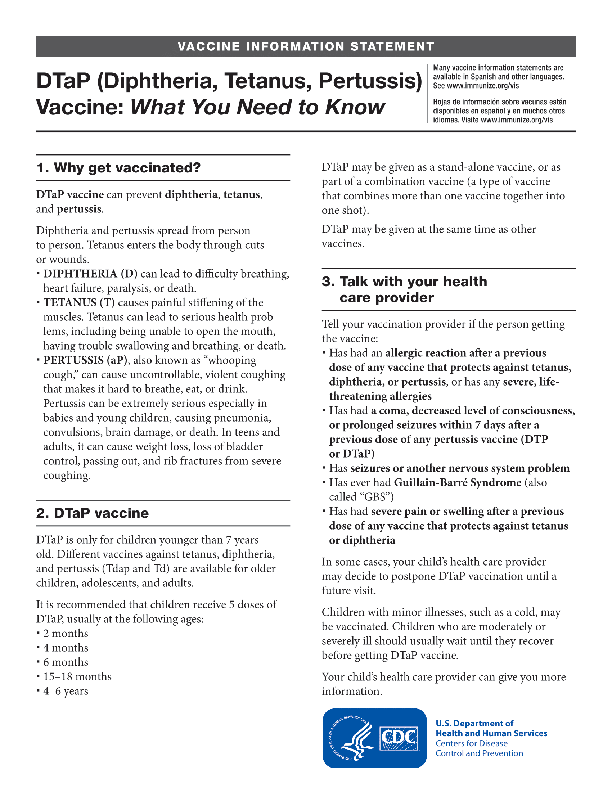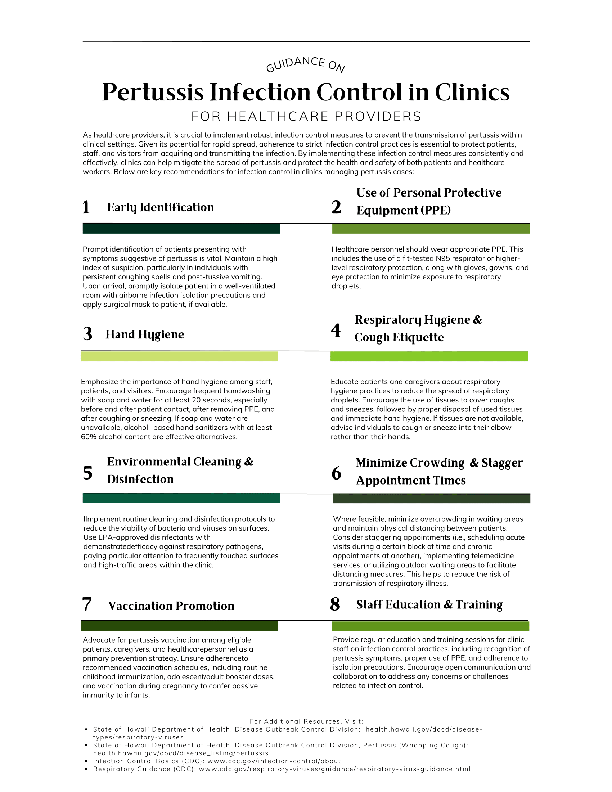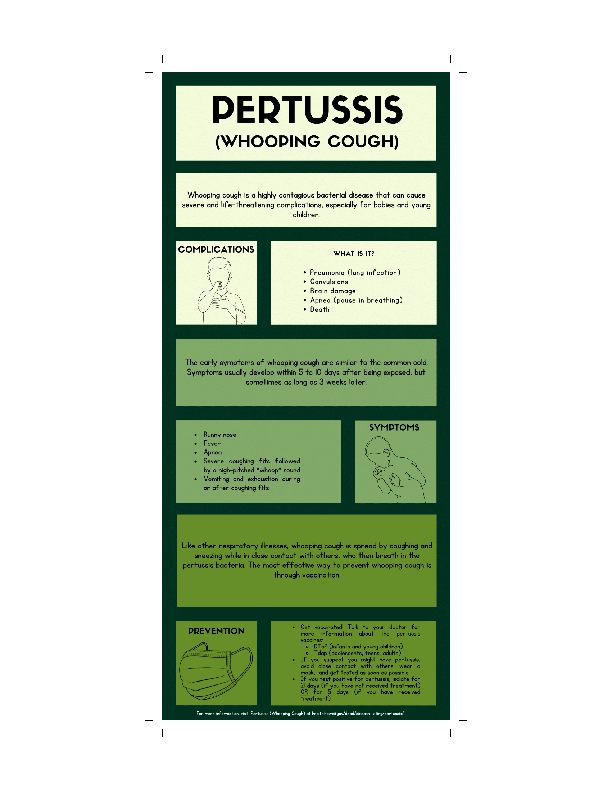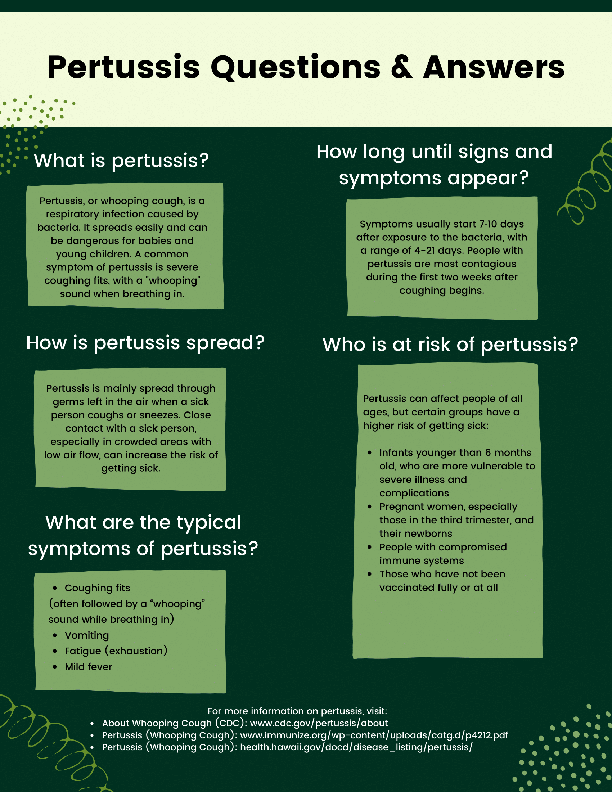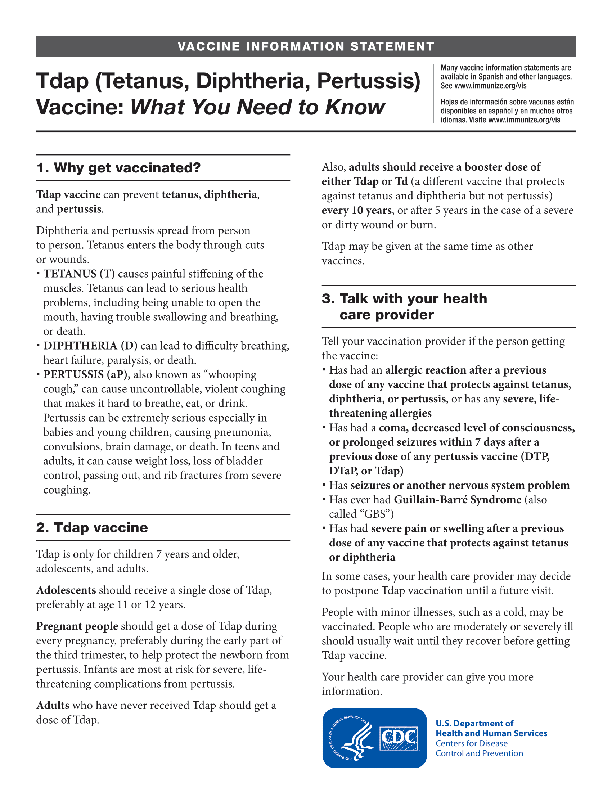Pertussis (Whooping Cough)
Report a Case
Disease Reporting Line:
(808) 586-4586
About This Disease
Pertussis, or whooping cough, is a highly contagious bacterial disease caused by Bordetella pertussis, which is found in the mouth, nose, and throat of an infected person.
Pertussis can cause serious and potentially life-threatening complications in infants and young children, especially those who are not fully vaccinated. Approximately half of all infants younger than age 12 months with pertussis, are hospitalized. Complications include pneumonia, seizures, apnea (a pause in the breathing pattern), encephalopathy (disease of the brain), and death.
Adolescents and adults may also develop complications, such as pneumonia, but they are usually less severe than in infants. Complications in teens and adults are often caused by the cough itself and include weight loss, loss of bladder control, fainting, and rib fractures (from severe coughing).
Signs and Symptoms
The disease usually starts with cold-like symptoms and maybe a mild cough or fever. Symptoms of pertussis usually develop within 5 to 10 days after being exposed, but sometimes as long as 3 weeks later.
Early symptoms can last for 1 to 2 weeks and usually include:
- Runny nose
- Low-grade fever
- Mild, occasional cough (may be minimal or absent in infants)
- Apnea – a pause in the breathing pattern (in infants)
Because pertussis in its early stages may look like the common cold, it often is not suspected or diagnosed until the more severe (later-stage) symptoms appear.
Later-stage symptoms
After 1–2 weeks and as the disease progresses, the “traditional” symptoms of pertussis may appear, including:
- Paroxysms (fits) of many, rapid coughs followed by a high-pitched “whoop”
- Vomiting during or after coughing fits
- Exhaustion after coughing fits
Although persons are often exhausted after coughing fits, they may appear fairly well in-between. Coughing fits generally become more frequent and severe as the illness continues, and can occur more often at night. The coughing fits can continue for up to 10 weeks or more.
The infection is generally milder in teens and adults, especially those who have been vaccinated.
Transmission
Like other respiratory illnesses, pertussis is spread by coughing and sneezing while in close contact with others, who then breathe in the pertussis bacteria.
Persons with pertussis are infectious from the beginning of the early symptoms through the third week after the onset of coughing, or until 5 days after the start of effective antibiotic treatment.
Diagnosis
Pertussis is diagnosed by a combination of symptoms, signs, physical examination, and laboratory tests. People with symptoms of pertussis or who have been exposed to someone with pertussis should contact a healthcare provider immediately.
Treatment
Pertussis is generally treated with antibiotics. Early treatment of pertussis is very important. Treatment may make the infection less serious if it is started early, before coughing fits begin, and may help prevent the spread of pertussis to close contacts.
Treatment after three weeks of illness is unlikely to help, even though the person still has symptoms.
Persons who have been in close contact with someone with pertussis (such as household members), especially those at high risk for developing severe disease, should also receive antibiotics after exposure to try to prevent getting or spreading the disease. Close contacts should receive antibiotics regardless of their age and vaccination status.
Pertussis can sometimes be very serious, requiring treatment in the hospital. Infants are at greatest risk for serious complications from pertussis.
Risk in Hawaii
Prevention
The most effective way to prevent pertussis is through vaccination. Pertussis vaccines are recommended for people of all ages. There are two kinds of vaccines used today to protect against pertussis, both of which are combined with vaccines for other diseases:
Infants and children need 5 doses of DTaP vaccine for maximum protection, at ages 2, 4, 6, 15-18 months, and at 4-6 years.
Adolescents should receive a single dose of Tdap, preferably at age 11 or 12 years.
Adults who have never received Tdap should get a dose of Tdap.
Also, adults should receive a booster dose of either Tdap or Td (a different vaccine that protects against tetanus and diphtheria but not pertussis) every 10 years, or after 5 years in the case of a severe or dirty wound or burn.
Pregnant women should receive a dose of Tdap vaccine during the 3rd trimester of each pregnancy, preferably during the early part of gestational weeks 27 through 36.
Healthcare personnel who have direct patient contact (especially with infants) should receive a single dose of Tdap if they have not previously received one.
In addition to vaccination, practicing good hygiene is recommended to prevent the spread of respiratory illnesses, including pertussis. To practice good hygiene you should:
- Cover your mouth and nose with a tissue when you cough or sneeze.
- Put your used tissue in the waste basket.
- Cough or sneeze into your upper sleeve or elbow, not your hands, if you don’t have a tissue.
- Wash your hands often with soap and water for at least 20 seconds.
- Use an alcohol-based hand rub if soap and water are not available.
Additional Resources
Hawaii State Department of Health Pertussis Fact Sheet (PDF)
Centers for Disease Control and Prevention (CDC)
Vaccine Information Statements:
Information for Clinicians
Centers for Disease Control and Prevention (CDC)
Hawaii Department of Health Disease Reporting
Print Materials
Last Reviewed: July 2024


